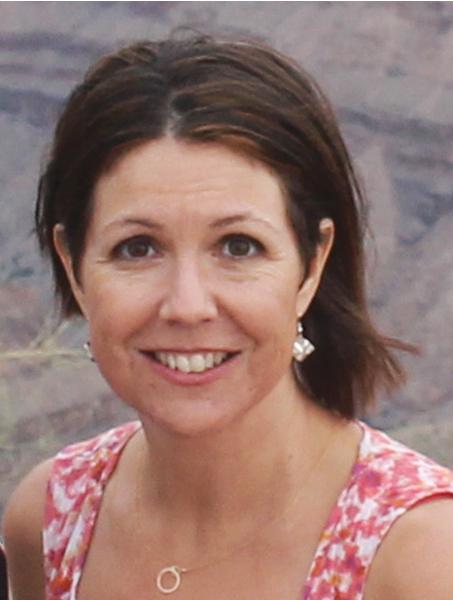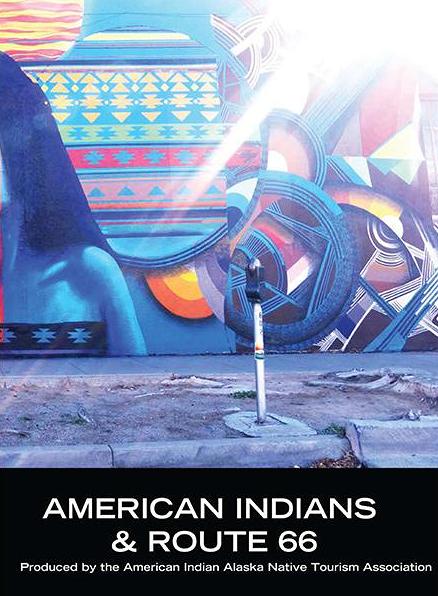 |
Canku Ota
|
 |
|
(Many Paths)
|
||
|
An Online Newsletter
Celebrating Native America
|
||
|
June 2016 - Volume 14
Number 6
|
||
|
|
||
|
Snell Authors, Designs
Route 66 Guidebook
|
||
|
by Cherokee Phoenix
staff reports
|
||
ALBUQUERQUE, N.M. – Cherokee Nation citizen Lisa Snell recently finished writing and designing a guidebook for the American Indian Alaska Native Tourism Association and National Park Service about Native American tribes along the historic Route 66. The guidebook “American Indians & Route 66,” as well as its website, details the histories of more than two dozen tribal communities along the 2,400-mile byway and their relationships to the road that helped change the West. Stretching from Chicago to California, more than half the route cuts through Indian Country. Those behind the project said the work was aimed at filling the gap between reality and the stereotypes once used to lure travelers along the route, from the billboards that featured Indian figures wearing war bonnets to staged photo ops and metal teepees. Tribes now have a venue to tell their own stories, said Snell, who was tapped by the AIANTA to spend a year traveling the route, doing research and conducting interviews. It was an eye-opener even for Snell, who publishes the Native American Times and Native Oklahoma. “It was so much different from what I had been exposed to during childhood, growing up watching the Lone Ranger and what you saw in the advertisements. What I experienced was completely different from the images and the things I read,” she said.
The guidebook was unveiled the first week of May by the tourism association. It includes stories of how communities were affected by the commerce that came along with traffic on Route 66. The book and website also cover the role played by the federal government’s Indian relocation program of the 1950s and how the romance of the roadway was partly spurred by the marketing of the Hollywood version of the Indian. Snell's research and interviews indicated what happened along America's Mother Road was more about money than the sharing of a culture. “Because of the socio-economic conditions, what do you do? You take the job, you put on your buckskins, you put on your war bonnet and you have your picture taken. You do the job,” she said. “That’s been perpetrated through today. It’s still that image we have. It’s lingering.” Sammye Meadows, who works with AIANTA, said interest in tourism has grown among tribes now that some have fostered successful programs for tapping their own cultural resources. Foreign visitors alone account for an estimated $7 billion in annual spending in Indian Country and visitation by overseas travelers has grown by nearly 1 million during the past several years, according to data from the U.S. Department of Commerce. “It’s an evolving thing and I think a lot more stories will come forward,” Meadows said. “People will have stories they would like to contribute to the overall sort of correcting of the tribal image.” Aside from history that stretches back to the Pueblo Revolt in the centuries before New Mexico was a state and the creation of reservations, the guidebook includes details about key sites along Route 66 – both old and new – as well as etiquette for attending powwows and tips for buying arts and crafts. For more information, visit http://www.americanindiansandroute66.com. |
||||
|
|
|
|
||
|
|
||
| Canku Ota is a free Newsletter celebrating Native America, its traditions and accomplishments . We do not provide subscriber or visitor names to anyone. Some articles presented in Canku Ota may contain copyright material. We have received appropriate permissions for republishing any articles. Material appearing here is distributed without profit or monetary gain to those who have expressed an interest. This is in accordance with Title 17 U.S.C. Section 107. | ||
|
Canku Ota is a copyright ©
2000 - 2016 of Vicki Williams Barry and Paul Barry.
|
||
 |
 |
|
|
The "Canku
Ota - A Newsletter Celebrating Native America" web site and
its design is the
|
||
|
Copyright ©
1999 - 2016 of Paul C. Barry.
|
||
|
All Rights Reserved.
|
||

